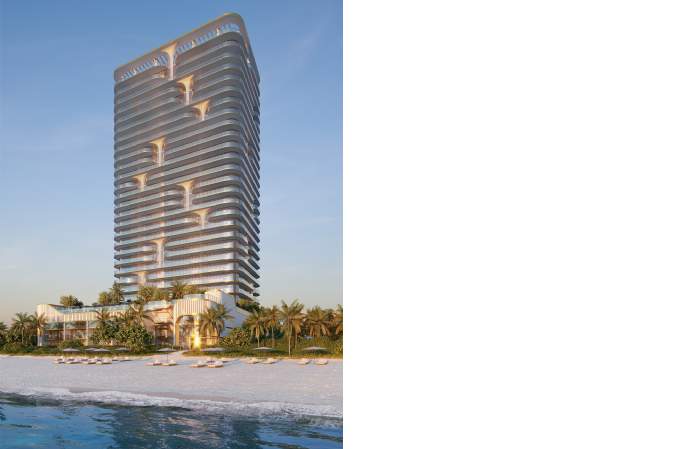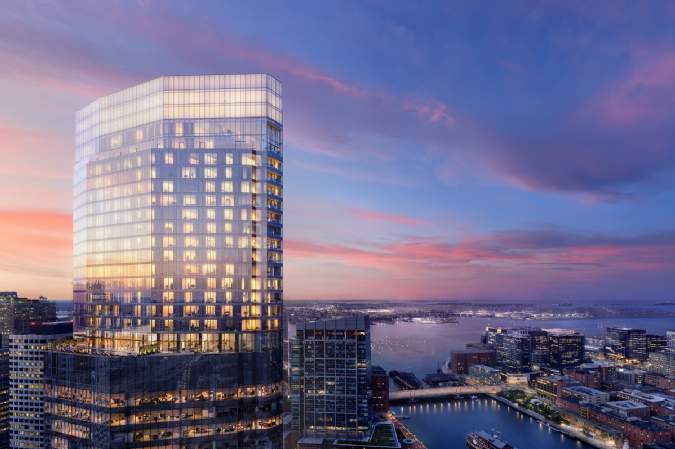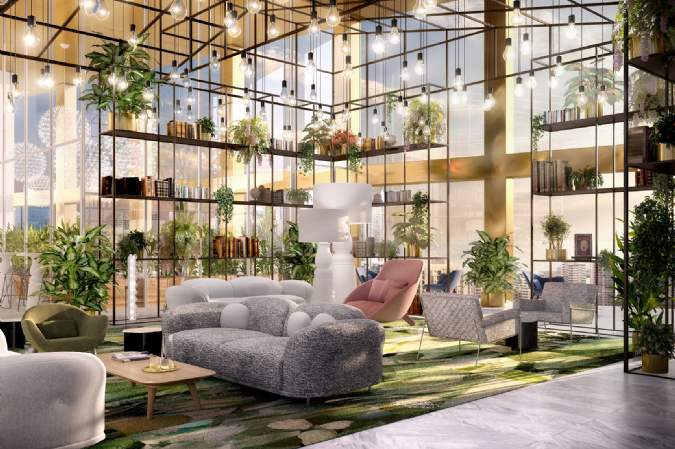Geographic diversification is not the only way that the sector is changing, with new buyers and new brands boosting branded residences
The concept of a branded residence has existed since the 1920s, though the sector did not truly emerge as a large subset for the residential market until the 1980s. Historically centred in North America, today’s branded residential schemes can be found in almost every corner of the globe. Across the world, there are 690 completed schemes as of mid-2023, with over 600 schemes in the pipeline expected to be delivered by 2030. This future growth is in line with historic trends – over the past decade, branded residences schemes have increased by over 160%.
Once accounting for all of the schemes in existence, today North America accounts for just over one-third of the total supply. In the past 30 years, as the sector has grown, it has expanded into all regions; Asia Pacific and the Middle East are hotspots as they are home to an additional 40% of total supply. The highest growth over the pipeline period can be found in the Middle East (+120%) and in Central and Latin America (+89%), with all global regions forecast to exhibit high levels of growth to 2030.
Beyond growing as a sector, branded residences have diversified away from being entirely luxury hotel-driven to offering products across all of the hotel chain scales as well as offering branded residential schemes from non-hotel brands. Nonhotel brands can cross the spectrum from fashion to design and from automotive to food and beverage brands – each offering distinct lifestyles to their global buyer base.

Waldorf Astoria Residences - Pompano Beach
The highest growth over the pipeline period can be found in the Middle East (+120%) and in Central and Latin America (+89%), with all global regions forecast to exhibit high levels of growth to 2030.
Brands, buyers, and boosted growth
Geographic diversification is not the only way that the branded residences sector is changing. The sector has evolved from a market dominated entirely by hotel brands to a diverse combination of hotel and nonhotel brands.
Parent companies and parent groups, with large numbers of brands under their umbrellas, continue to compete for market share and brand recognition. Marriott International remains comfortably in first place with the highest number of completed schemes for hotel operators, a position the company has maintained since 2002. This is not guaranteed for the future however, with new entrants and rising competitors, such as Accor, continuing to break into the market.
Non-US parent companies such as Emaar Hospitality and Banyan Tree Group have risen to become global contenders.
With non-hotel branded residences growing at a different pace, there is more activity and jostling for position compared to the hotel parent brands. YOO remains top of the table through the pipeline forecast period. Several other brands, such as Mahindra (Pininfarina), Elie Saab, and Capri Holdings (Versace), will ascend through the rankings over the forecast period.

The Ritz-Carlton Residences - Boston, South Station
Just as the parent companies must differentiate themselves while maintaining growth in an increasingly crowded landscape, so too must the individual brands in order to attract buyers. For hotel brands, the top three spots are claimed by Four Seasons, The Ritz-Carlton, and St. Regis. Four Seasons and The Ritz-Carlton have competed heavily for first place in the rankings for many years; for 2023, Four Seasons has clinched the top spot for hotel brands for the second year in a row.
By contrast to the hotel brands, most non-hotel brands have fewer than ten schemes in operation. YOO and Trump, the latter considered non-hotel brand for the purpose of this report, are the exceptions to this trend, however, as they have long histories of activity in the branded residential sector. These brands have 72 and 30 completed schemes, respectively, with over 25,000 units between them. Non-hotel brands tend to emphasise their differences from hotels by focusing much more on integrating elements of their specific brand via design, lifestyle, or amenities. For example, fashion brands may design their residences with vibrant colours and patterns that are emblematic of the brand style – think zig-zag patterns for Missoni or bold colours, gold, and lions for Versace Residences.

Sky Lounge, Hyde, Panama City, Wanders&YOO
For both hotel and non-hotel brands, there are compelling value propositions for offering branded residential schemes. Hotels deliver their culture of service, quality of food and beverage, housekeeping, and concierge services. Hoteliers already possess the know-how to develop and operate properties—and what are branded residences, other than private homes infused with with the DNA of internationally recognized hospitality brand, where services and amenities are re-imagined for that setting? For non-hotel brands, there is the opportunity to offer a specific design or concept that brand followers are familiar with, and offer the possibility for fully designed and integrated spaces in line with the brand ethos.
The buyers of branded residences are as diverse as the brands that make up the sector. However, there are a few general characteristics of a large share of people who buy branded residences. Buyers are typically global high net worth individuals (HNWIs), who are looking for lock-up-and-leave properties to add to an already existing portfolio. Branded residences are trophy assets for these global buyers who are able to buy into the lifestyle and associations with the brand (or brands) of their choosing.
The brand associations that individuals form can be incredibly powerful drivers for choosing to purchase a branded residence. On the main, individuals are highly brand loyal, so once an association or connection to a brand is made, the connection tends to last. Individuals place a great deal of trust and confidence into brands with which they already have a relationship, which can help brands attract more buyers and develop more profound, meaningful relationships. In fact, Millennials and Generation Z, the future buyer base for branded residences, are increasingly – and disproportionately brand loyal compared to other generations. For brands, this loyalty has the potential to mean a dedicated buyer base in the years to come.
Read the articles within Spotlight: Branded Residences below.
Further information
Global Residential Development Consultancy
.jpg)
.jpg)
.jpg)
.jpg)
.jpg)
.jpg)